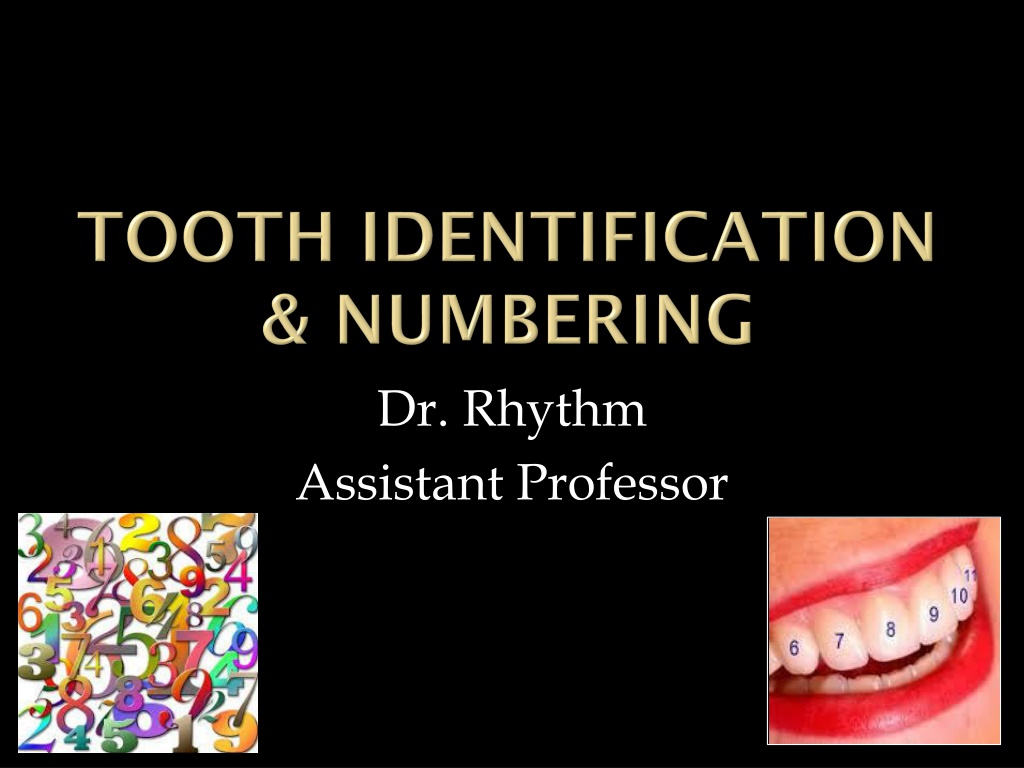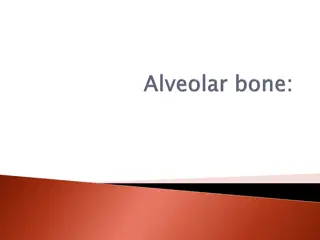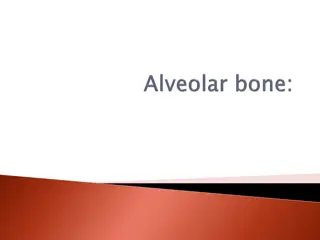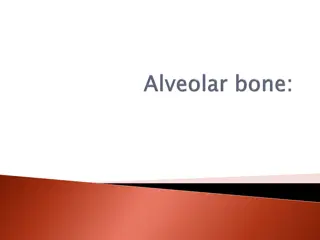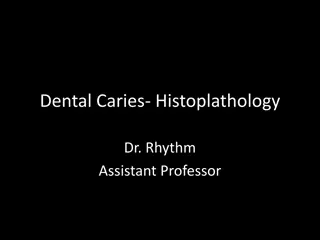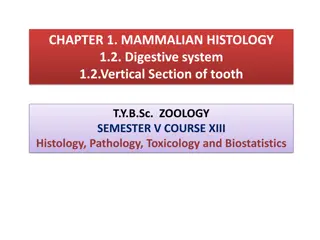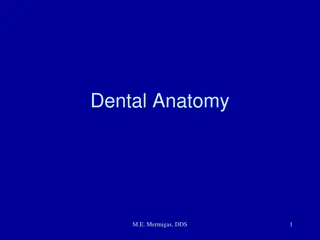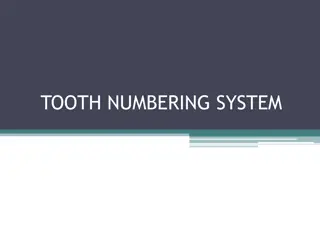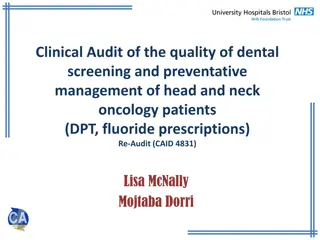Understanding Dental Anatomy: Tooth Numbering Systems in Clinical Practice
Learn about tooth numbering systems essential for dental practice - Palmer, Universal, and FDI systems. Explore the history, advantages, and differences between these notation methods for primary and permanent teeth.
Download Presentation

Please find below an Image/Link to download the presentation.
The content on the website is provided AS IS for your information and personal use only. It may not be sold, licensed, or shared on other websites without obtaining consent from the author. Download presentation by click this link. If you encounter any issues during the download, it is possible that the publisher has removed the file from their server.
E N D
Presentation Transcript
Dr. Rhythm Assistant Professor
The Dental Arch The human dentition: 20 primary & 32 permanent teeth
Introduction Learning understanding dental anatomy. Tooth numbering or shorthand system of tooth notation is necessary in clinical practice for recording data and communication. nomenclature is the first step in The various tooth notation systems are as follows: Palmer notation system Universal notation system FDI system 1. 2. 3.
Palmer notation system In 1861 Adolph Zsigmondy of Vienna introduced the symbolic system for permanent dentition. He then modified it for the primary dentition in 1874. The symbolic system is now commonly referred to as the Palmer notation system or Zsigmondy system. Also called Angular or Grid system
Primary teeth- EDCBA ABCDE EDCBA ABCDE Permanent teeth 87654321 12345678 87654321 12345678
1. simple to use 2. No confusion between primary & permanent dentition
1. Oral communication is difficult 2. Opposing or contralateral teeth are indicated by same number or alphabet which is confusing.
ADA officially recommended the Universal system in 1968. In this system for the permanent dentition the maxillary teeth are numbered through 1 to 16 beginning with upper right third molar. The mandibular teeth are numbered through 17 to 32 beginning with lower left third molar. The universal system notation for primary dentition utilises upper case alphabets.
Universal notation system Primary teeth- ABCDE FGHIJ TSRQP ONMLK Permanent teeth- 1 2 3 4 5 6 7 8 9 10 11 12 13 14 15 16 32 31 30 29 28 27 26 25 24 23 22 21 20 19 18 17
In this system, the teeth that should be there are numbered. If you are missing your third molars, your first number will be 2 instead of 1, acknowledging the missing tooth. If you ve had teeth removed or teeth missing, the missing teeth will be numbered as well.
1. Each tooth has a separate unique letter or number to denote it.
1. Difficult to remember letters or numbers of individual teeth.
FDI system (Federation Dentaire Internationale)(Two Digit Notation) The FDI system is a two digit system that has been adopted by WHO . In this system the first digit indicates the quadrant and the second digit indicates the tooth within the quadrant. 1 to 4 and 5 to 8 as the first digit indicates permanent and primary dentition respectively. 1 to 8 and 1 to 5 as the second digit indicates permanent and primary teeth respectively.
1. Each tooth has a separate number. 2. Simple to understand and teach. 3. Esay to pronounce in conversation. 4. Easy to transmit over computer & easy fr charting.
1. May be confused with ADA numbers.
Q. 1 Oldest system for notation is A. Palmer B. ADA C. FDI D. Universal
Q.2 Grid system is another name for A. Universal B. ADA C. FDI D. Palmer/Zsigmondy
Q.3 ADA system is anoter name for A. Universal system B. Angular system. C. Grid system D. FDI notation. D
Q.4 Primary dentition consists of A. 20 teeth B. 22 teeth C. 30 teeth D. 32 teeth
Q.5 Which system is confused with ADA system A. FDI system B. Universal system C. Grid system D. Angular system
Q. 6 Which system can be transmitted over computer A. FDI B. ADA C. Grid D. Angular
Q.7 If maxillary right third molar is missing counting in ADA starts from A. 1 B. 2 C. 3 D. 4
Q.8 Which system is called Two Digit notation A. FDI B. ADA C. Grid D. Angular
Q.9 Maxillary right central incisor will be numbered as . In ADA notation A. 6 B. 7 C. 8 D. 9
Q.10 Maxillary right central incisor will be denoted as . In FDI notation A. 11 B. 21 C. 31 D. 41
